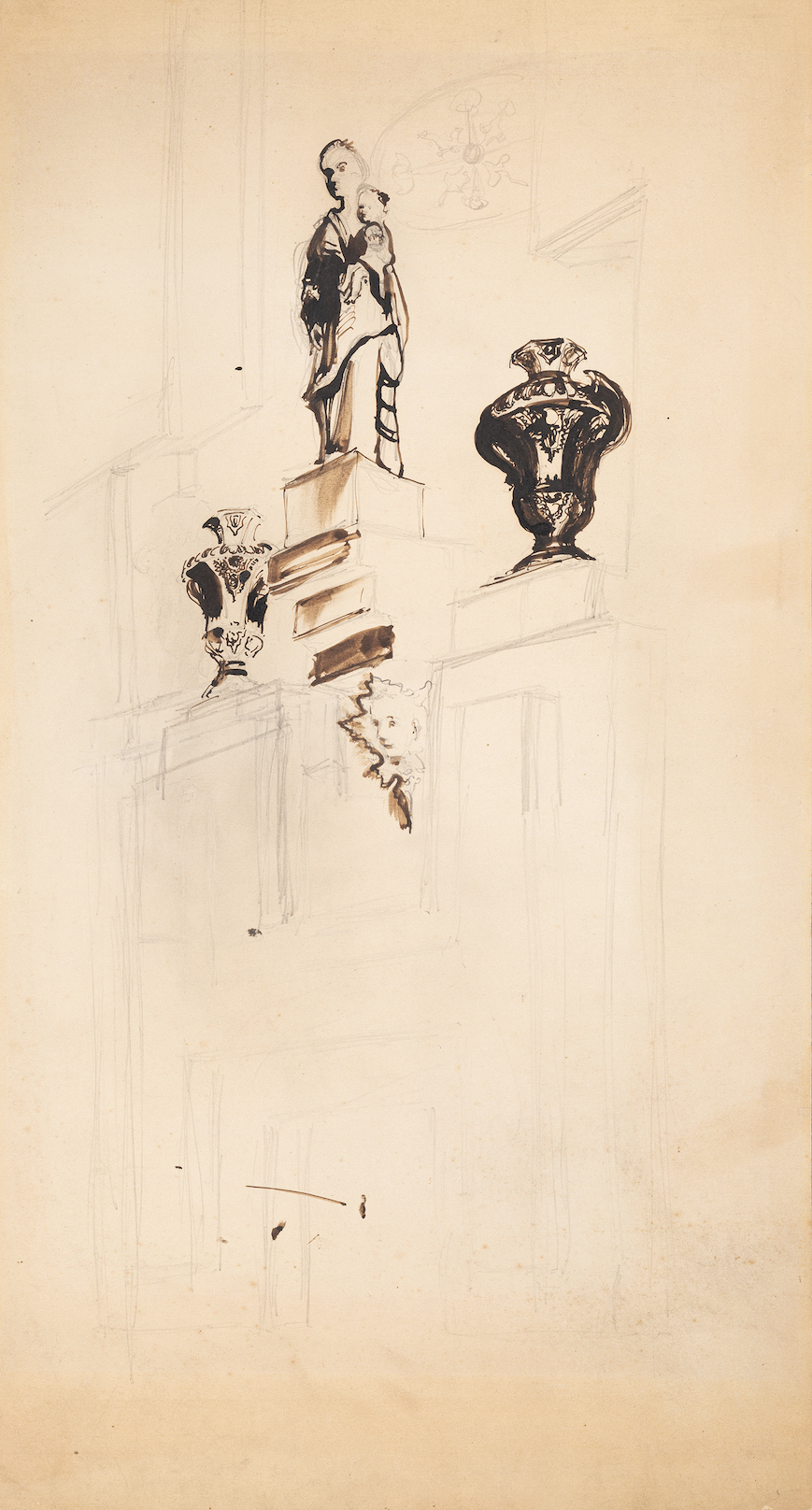After the 1848 Revolution, Victor Hugo became politically active as a defender of the Republic, but his opposition to Louis-Napoléon Bonaparte’s coup in 1851 led to his exile. After a brief stay in Brussels, Hugo settled in Jersey before moving, in 1855, to Guernsey. The following year, he bought Hauteville House, a large mansion overlooking the old town of Saint-Pierre-Port and the bay of Havelet. The house sheltered Victor Hugo and his family in exile for nearly 15 years, from 1856 to 1870. In addition to writing the great masterpieces of the second part of his career, at Hauteville House Hugo personally designed the space and reimagined the architecture and decoration of the house: “I was born to be a decorator”, he declared.
Our drawing is a testament to Victor Hugo’s decorative ambitions at Hauteville House - his “autographe de trois étages”. While recombining woodwork, tapestries, and furniture from various periods to recreate a space that was entirely his own, Hugo resorted to drawing for the creation of his décor. Our Project presents a sketch of the final version of the dining room’s fireplace (fig. 1), which encapsulated the true heart of family life, the emblem of the Hugo household. Rendered with aerial perspective and precise dashes of ink and wash, our composition evokes the gothic cathedrals of Paris.
Most of the artist’s decorative drawings are found in an album (NAF24807) at the Bibliothèque Nationale. Our sheet is part of the collection of descendants of Paul Meurice, a playwright and close friend of Victor Hugo. During the 18 years of exile, Meurice was Hugoʼs trusted confidant and ambassador in Paris: he managed the publication of Hugo’s works, his contracts, and the scheduling of plays, all while pursuing his own career. When Hugo returned to Paris, he moved into Meurice’s home and appointed him the executor of his literary estate. During his lifetime, Meurice owned the largest and most significant collection of Victor Hugo’s drawings, both in quantity and quality.
